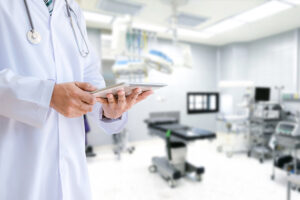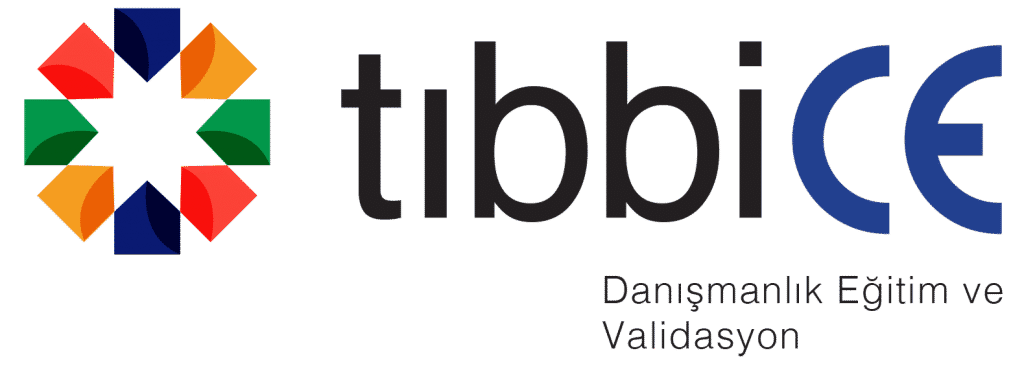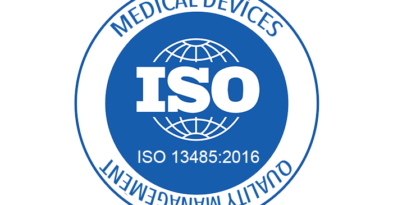Clinical Evaluation Report tıbbi is a report that must be prepared regardless of the risk group of the device. Clinical Evaluation Report must demonstrate that the medical device has the safety and performance properties at the same level as the applicable directives, standards, guides etc. set forth and as the equivalent and reference device have. In the preparation of Clinical Evaluation Report different clinical and non-clinical data are utilized. The data that will be used in the Clinical Evaluation Report must be correctly chosen, evaluated with attention and approved by the professional team.


Clinical Evaluation Report must be reviewed and updated periodically. Advice on how frequently it should be reviewed is written in Meddev 2.7/1 guide. Clinical evaluation report which is the most critical section of the technical file of a device, must be prepared by a person who has knowledge on the production and applicable standards, directives and guides, and also experience on clinical evaluation. Clinical Evaluation Report Consulting is important because:
- Clinical Evaluation Report Consulting plays an effective role in deciding which data should be used in the clinical evaluation report and where should this data be gathered from.
- Clinical Evaluation Report Consulting also plays an important role in determining the evaluation criteria.
- Clinical Evaluation Report Consulting provides solutions on how frequently you should review the clinical evaluations.
TıbbiCE Consulting, Training and Validation Services’ principle for product and quality management system is to give a “Purpose-driven, Solution and Customer Satisfaction Oriented” service that grounds on data confidentiality with its expert consultants.
We share the knowledge and experience we have gained in 9 years through working with more than 140 medical device producers and being involved in the CE and ISO 13485 Certification processes of more than 300 medical devices. We conduct the certification process professionally and aim to complete it in optimum time.
General Overview of Clinical Evaluation
Clinical Evaluation (Meddev 2.7. rev.04 Guide) INTRODUCTION
Pursuant to
– section 6a of Annex I to Directive 93/42/EEC (amended by Directive 2007/47/EC) and to
– section 5a of Annex 1 to Directive 90/385/EEC (amended by Directive 2007/47/EC),
the demonstration of conformity with Essential Requirements for a medical device must include a clinical evaluation, which is conducted in accordance with Annex X to Directive 93/42/EEC or with Annex 7 to Directive 90/385/EEC.
Clinical Evaluation (meddev 2.7.1.rev.04 Guide) SCOPE
It provides a general approach for MDD and AIMDD, cannot be used for IVD.
The depth and the scope of the clinical evaluation must be appropriate to the nature, intended purpose and the risks of the investigated device.
MEDDEV 2.7.1 guide is not legally binding. It is recognized that under given circumstances, for example as a result of scientific developments, an alternative approach may be possible or appropriate to comply with the legal requirements.
Nevertheless, due to the participation of interested parties and of experts from national Competent Authorities, it is anticipated that this guide will be followed within the Member States, thereby supporting uniform application of relevant provisions of EU Directives and common practices.
On certain issues not addressed in the Directives, national legislation may be different from this guide.
This guide is regularly updated according to regulatory developments. The latest version of the guide should always be used.
Clinical Evaluation (Meddev 2.7.1rev.04 Guide) DEFINITIONS
Adverse event: any untoward medical occurrence, unintended disease or injury, or any untoward clinical signs (including an abnormal laboratory finding) in subjects, users or other persons whether or not related to the investigational medical device.
Serious adverse event: adverse event that led to death or led to serious deterioration in the health of the subject.
Clinical data: Clinical data are sourced from:
– clinical investigation(s) of the device concerned; or
– clinical investigation(s) or other studies reported in the scientific literature, of a similar device for which equivalence to the device in question can be demonstrated; or
– published and/or unpublished reports on other clinical experience of either the device in question or a similar device for which equivalence to the device in question can be demonstrated.
Clinical evaluation: a methodologically sound ongoing procedure to collect, appraise and analyse clinical data pertaining to a medical device and to evaluate whether there is sufficient clinical evidence to confirm compliance with relevant essential requirements for safety and performance when using the device according to the manufacturer’s Instructions for Use.
Clinical evidence: the clinical data and the clinical evaluation report pertaining to a medical device.
Clinical investigation: systematic investigation in one or more human subjects, undertaken to assess the safety or performance of a medical device. Note: ‘clinical trial’ or ‘ clinical study’ are synonymous with ‘ clinical investigation’.
Clinical investigation plan: document that states the rationale, objectives, design and proposed analysis, methodology, monitoring, conduct and record-keeping of the clinical investigation.
Clinical performance: behaviour of a medical device or response of the subject(s) to that medical device in relation to its intended use, when correctly applied to appropriate subject(s).
Clinical safety: freedom from unacceptable clinical risks, when using the device according to the manufacturer’s Instructions for Use.
Clinical use: use of a medical device in or on living human subjects.
Equivalent device: a device for which equivalence to the device in question can be demonstrated.
Harmonised standards: standards whose references have been published in the Official Journal of the European Communities.
Hazard: potential source of harm.
Hazard due to substances and technologies: for the purpose of this MEDDEV document, a hazard that is seen with products that share specific characteristics.
Incident: any malfunction or deterioration in the characteristics and/or performance of a device, as well as any inadequacy in the labelling or the instructions for use which, directly or indirectly, might lead to or might have led to the death of a patient, or user or of other persons or to a serious deterioration in their state of health.
Information materials supplied by the manufacturer: for the purpose of this document, this refers to the labelling, instructions for use and the manufacturer’s promotional materials for the device under evaluation.
PMCF study: a study carried out following the CE marking of a device and intended to answer specific questions relating to clinical safety or performance (i.e. residual risks) of a device when used in accordance with its approved labelling.
PMCF plan: the documented, proactive, organised methods and procedures set up by the manufacturer to collect clinical data based on the use of a CE-marked device corresponding to a particular design dossier or on the use of a group of medical devices belonging to the same subcategory or generic device group as defined in Directive 93/42/EEC.
Risk: combination of the probability of occurrence of harm and the severity of that harm.
What is a Clinical Evaluation?
– Clinical evaluation is a methodologically sound ongoing procedure to collect, appraise and analyse clinical data pertaining to a medical device and to analyse whether there is sufficient clinical evidence to confirm compliance with relevant essential requirements for safety and performance when using the device according to the manufacturer’s instructions for use.
– The requirements for clinical evaluation apply to all classes of medical devices. The evaluation should be appropriate to the device under evaluation, its specific properties, and its intended purpose.
– Benefits and risks should be specified, e.g. as to their nature, probability, extent, duration and frequency. Core issues are the proper determination of the benefit/risk profile in the intended target groups and medical indications, and demonstration of acceptability of that profile based on current knowledge/ the state of the art in the medical fields concerned.
– Where demonstration of conformity with essential requirements based on clinical data is not deemed appropriate, an adequate justification has to be given. The justification is included in the clinical evaluation report with contents according to:
o Annex 7 section 1.5 of AIMDD (for active implantable medical devices), or
o Annex X section 1.1d of MDD (for medical devices).
– Where demonstration of conformity with essential requirements based on clinical data is not deemed appropriate, an adequate justification is given based on the medical device’s interaction with the body, its intended clinical performance, the claims of the manufacturer and the risk management results. If the compliancy of the device to essential requirement will be demonstrated only through performance tests, comparison test and pre-clinical tests, it must be presented with an adequate justification.
– Conformity to the Essential Requirements can only be assumed when the following items are aligned with each other:
o the information materials supplied by the manufacturer (the labelling, instructions for use, available promotional materials, including accompanying documents foreseen by the manufacturer)
o the clinical evaluation (the device description used for the clinical evaluation, other contents of the clinical evaluation report)
o the available clinical data (such as results of Clinical Investigations, publications, PMS studies, etc.)
o Other files in the technical file (product description, risk analysis documents etc.)
o Especially the indications, contraindications, side effects, patient group (children, infants, elderly, pregnant women etc. risk group abbreviations) must be determined in the light of the received clinical data.
– Particularly, evaluators should address if the following points are adequately supported by sufficient clinical evidence:
o the intended purpose described in the information materials supplied by the manufacturer (including for all medical indications);
o the clinical performance and benefits described in the information materials supplied by the manufacturer (including, for example, any claims on product performance and safety);
o measures for risk avoidance and risk mitigation described in the information materials supplied by the manufacturer (including, for example the declaration of the residual risks, contraindications, precautions, warnings, instructions for managing foreseeable unwanted situations);
o the usability of the device for the intended users and the suitability of the information materials supplied by the manufacturer for the intended users (including, if applicable, for lay or disabled persons);
o instructions for target population groups (including, for example, pregnant women, paediatric populations).
When is clinical evaluation undertaken and why is it important?
Clinical evaluation is conducted throughout the life cycle of a medical device, as an ongoing process.
Usually, it is first performed during the development of a medical device in order to identify data that need to be generated for market access. Clinical evaluation is mandatory for initial CE-marking and it must be actively updated thereafter.
Clinical evaluation is necessary and important because it ensures that the evaluation of safety and performance of the device is based on sufficient clinical evidence throughout the lifetime that the medical device is on the market.
This ongoing process enables manufacturers to provide notified bodies and competent authorities with sufficient clinical evidence for demonstration of conformity of the device with the Essential Requirements throughout its lifetime (for example for CE marking, fulfilment of post-market surveillance and reporting requirements, or during surveillance procedures).
Clinical evaluation for initial CE-marking
Clinical evaluation is required to be carried out for the conformity assessment process leading to the CE-marking and placing on the market of a medical device. The purpose is to:
• document that there is sufficient clinical evidence to demonstrate conformity with the Essential Requirements covering clinical performance and clinical safety;
• identify aspects that need to be addressed systematically during post-market surveillance (PMS), e.g. in post market clinical follow-up studies (PMCF Studies) required under the medical device directives. Typically, these aspects include estimation of residual risks and uncertainties or unanswered questions (such as rare complications, uncertainties regarding long-term performance, safety under wide-spread use).
How Frequently Should the Clinical Evaluation be Updated?
The clinical evaluation is actively updated:
• when the manufacturer receives new information from PMS that has the potential to change the current evaluation;
• if no such information is received, then at least annually if the device carries significant risks or is not yet well established; or every 2 to 5 years if the device is not expected to carry significant risks and is well established, a justification should be provided.
PMS, POST MARKET SURVEILLANCE, PMCF, POST MARKET CLINICAL FOLLOW UP
PMS (Post Market Surveillance) is the name given to the system of collecting, compiling and evaluating data of products with CE marking that have been presented to the market. During the initial CE-marking, since there are no post-marketing data of the product, the post marketing data of equivalent devices are used.
PMCF (Post Marketing Clinical Follow-up) is a study done after the CE certification of the product and it aims to answer questions specific to the clinical safety and performance (exp. residual risks) when the device is used according to its approved labeling and user’s manual. PMCF must be done according to a plan and it must be documented.
Both of the two studies mentioned above are done and documented as the clinical evaluation studies are conducted.
TıbbiCE Consulting, Training and Validation Services’ principle for product and quality management system is to give a “Purpose-driven, Solution and Customer Satisfaction Oriented” service that grounds on data confidentiality with its expert consultants.
We share the knowledge and experience we have gained in 9 years through working with more than 140 medical device producers and being involved in the CE and ISO 13485 Certification processes of more than 300 medical devices. We conduct the certification process professionally and aim to complete it in optimum time.
Gökhan YALÇIN



